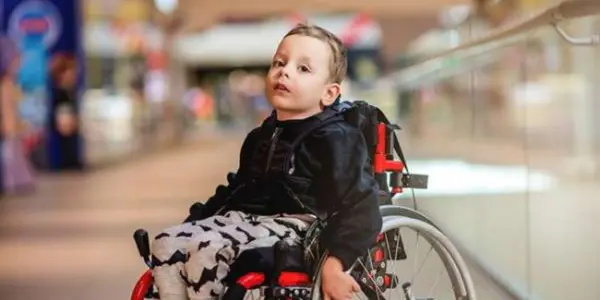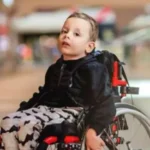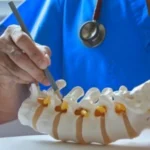Spinal Muscular Atrophy, or SMA, stands as a significant challenge among neurological conditions targeting motor neurons in the body. However, breakthroughs in medicine have brought new hope for patients and their families. People living in Delhi NCR who need specialist care can improve their treatment results and quality of life by consulting the best spine doctor in Delhi and learning about this disease to find the right medical guidance.
What is Spinal Muscular Atrophy: Understanding the Condition
What is spinal muscular atrophy? This disease is inherited and shows up in around 1 out of every 10,000 live births. It happens because of changes in the SMN1 gene, which is part of chromosome 5q. The condition leads to a shortage of the survival motor neuron protein, which is necessary for motor neurons in the spine to work . Without enough of this protein, these neurons break down, which weakens and shrinks the muscles. The weakness can vary, from being mild to serious, based on the specific type of the disorder.
SMA is passed down in families through autosomal recessive inheritance. A child can have the condition if they inherit the faulty gene from both parents. About 2 to 3 percent of people carry this gene mutation making it important to provide genetic counseling to families with a prior history of SMA.
Recognizing Spinal Muscular Atrophy Symptoms: Early Warning Signs
Spotting spinal muscular atrophy symptoms early leads to better treatment results and faster care. Symptoms often depend on how severe the condition is, but some signs mean a doctor should be seen right away.
Parents might see delays in motor milestones in babies. Babies may have trouble lifting their heads sitting up on their own, or showing normal movement for their age. Weakness happens in muscles closer to the body’s center, like in the shoulders, hips, and trunk. Children might also appear “floppy” because their muscle tone is reduced.
Breathing problems can show up with SMA in its more intense types. Families might notice problems with feeding catching more colds or infections that affect breathing, or unusual breathing patterns. Knowing spinal muscular atrophy symptoms helps families get medical help , which is key to better results.
Classification and Types of SMA
Understanding Spinal Muscular Atrophy Type 1: Severe Early-Onset Form
Spinal muscular atrophy type 1 known also as Werdnig-Hoffmann disease, is the most serious type of this condition. Symptoms appear in babies less than 6 months old, and these infants never learn to sit up without help. In the past most affected children didn’t live past 2 years, but with newer treatments, survival rates and quality of life have improved.
Spinal Muscular Atrophy Type 2: Intermediate Form Management
Spinal muscular atrophy type 2 also called Dubowitz disease shows up in kids between 6 and 18 months old. Kids with this form are able to sit on their own, but they will not walk without support. With the right medical care and newer treatments, they can live well into adulthood. Starting treatment and continuing care over time play a big role in improving outcomes.
Types 3 and 4 of SMA are less severe, start later in life, and come with a better outlook. Type 3 individuals can walk without help, while Type 4 starts in adulthood causing mild muscle weakness but does not shorten life span.
Advanced Spinal Muscular Atrophy Treatment Options Available
Modern treatments for spinal muscular atrophy have brought a big change to how patients recover. They now offer hope where almost none was present before. New FDA-approved therapies now address the main genetic cause of the illness, which has widened the treatment options.
Risdiplam, also called Evrysdi, is a major step forward. It can now be given to babies as young as 16 days old. Trials have shown great results, with seven of eight Type 1 patients able to sit by their first birthday. The new tablet form that was approved makes it easier for families to stick to the treatment plan and gives patients better access to care.
Doctors use Nusinersen (Spinraza) as another proven way to treat SMA through intrathecal injections. This therapy changes SMN2 gene splicing to help the body make more functional SMN protein. Gene therapy with Zolgensma provides a one-time treatment choice for patients who qualify offering the chance to see long-term improvements.
Treating spinal muscular atrophy needs more than just medicine. To improve a patient’s condition and quality of life, it also includes respiratory care, physical therapy, good nutrition, and tools or equipment that help with daily tasks.
Finding Expert Care for SMA and Spine Surgery
To get expert care, people need to locate healthcare centers skilled in treating neuromuscular problems. The best spine surgery hospital in delhi has advanced facilities to manage SMA. These include modern diagnostic tools, treatment methods, and support services.
Sant Paramanand Hospital in Delhi is known as a top spine care center. It gives patients access to advanced treatments and skilled doctors. The hospital uses the latest technology and offers care that fits the unique needs and conditions of every patient.
Consulting an Expert in Endoscopic Spine Surgery
To address complex cases needing surgery, it is crucial to consult the best endoscopic spine surgeon in delhi. Although SMA often requires medical treatment, surgery can sometimes help with issues like scoliosis or breathing difficulties. A skilled evaluation helps separate SMA from conditions such as spinal tumor ensuring correct diagnosis and treatment.
Families wanting experienced care should reach out to Dr. Amit Shridhar, the best spine doctor in Delhi, to receive precise diagnoses and personalized care plans. Dr. Amit Shridhar creates tailored treatment approaches for various types of Spinal Muscular Atrophy (SMA), offering patients the most suitable and effective options for improved outcomes and quality of life.
Case Study: Transforming Lives Through Expert Care
Patient Background: An 8-month-old baby visited Sant Paramanand Hospital due to slow motor growth and weak muscles. The parents noticed problems with feeding and breathing, which led them to seek expert medical help.
Diagnostic Process: Doctors confirmed SMA Type 2 after performing genetic testing called MLPA, which stands for Multiplex Ligation-dependent Probe Amplification. They also checked SMN2 copy numbers to predict the condition’s severity while ruling out other possible illnesses.
Treatment Plan: The baby started taking Risdiplam along with getting respiratory aid and physical therapy. Specialists from neurology, pulmonology, and rehabilitation worked together to provide care.
Outcomes: The patient experienced major progress in motor skills after 12 months of treatment. They could sit without help and had better breathing stability. The family noticed a better quality of life and felt more hopeful about what lay ahead.
Patient Experience: The care we received transformed our understanding of what was possible for our child. Dr. Amit Shridhar and his team’s expertise, combined with their compassionate approach, gave us hope during our most challenging time,” the patient’s mother said.
SMA Statistics and Treatment Data
| SMA Type | Age of Onset | Motor Milestones | Life Expectancy | Treatment Response Rate |
| Type 0 | In utero | None achieved | Months | Limited data |
| Type 1 | 0-6 months | Never sits | Historically <2 years | 70-80% with modern therapy |
| Type 2 | 6-18 months | Sits, never walks | Adult life | 85-90% stabilization |
| Type 3 | >18 months | Walks independently | Normal | >90% stabilization |
| Type 4 | Adult onset | Normal development | Normal | >95% stabilization |
Treatment Efficacy Data:
- Risdiplam: Motor function improves in 87% of patients
- Nusinersen: 78% of patients either stabilize or improve
- Gene therapy: Type 1 patients see a 95% survival rate after 2 years
Frequently Asked Questions
Q: How often does spinal muscular atrophy occur in India?
A: Around 1 in every 10,000 live births worldwide is affected by SMA. The occurrence rate seems similar in India as well, with about 2 to 3% of the population being carriers.
Q: Can SMA be detected before a baby is born?
A: Yes, doctors can perform prenatal testing like chorionic villus sampling or amniocentesis to detect SMA. This is done to check if parents are carriers or if they’ve had children affected by SMA before.
Q: How SMA Differs from Other Spinal Health Issues
A: Both can lead to muscle weakness, but SMA is a genetic condition that damages motor neurons. spinal tumor, on the other hand, results from unusual tissue growth in the spine. During diagnosis, doctors often rule out spinal tumors to confirm SMA.
Q: Are there any support services in Delhi for families?
A: Yes many groups in Delhi offer help, like advocacy organizations financial support, and counseling services tailored to families’ needs.
Q: How good are the treatments we have now?
A: Treatments today work much better than before. Many patients can move better and live longer compared to what used to happen in the past.
Q: Why is physical therapy important in dealing with SMA?
A: Physical therapy plays a big role. It helps keep muscles working, avoids stiff joints, and helps people move better. Starting it and keeping it up during treatment makes a big difference.
Moving Forward with Hope and Expert Care
SMA care has changed a lot over the years giving patients and their families more hope and better help than ever. With top-notch doctors, better treatments, and helpful services, people with SMA now have a real chance to improve their lives and see better results.
Families in Delhi NCR need to connect with skilled healthcare providers who know the challenges of managing SMA. Advanced treatments, customized care plans, and continuous support offer a strong base to achieve better results and bring fresh hope for what lies ahead.
(This blog provides general health information and is not a substitute for professional medical advice. Consult your doctor for personal concerns or emergencies.)




